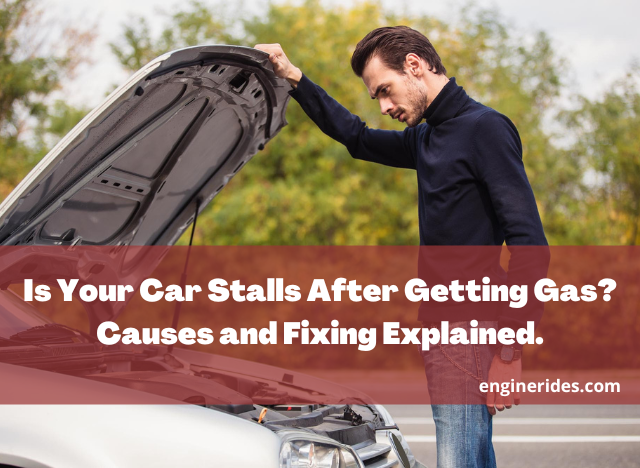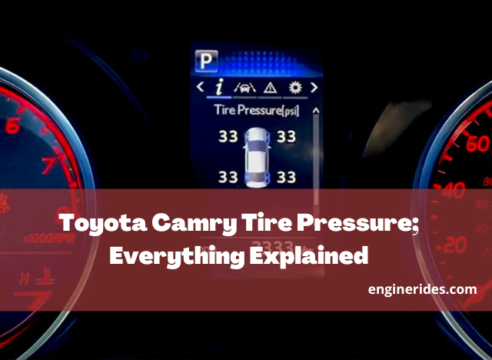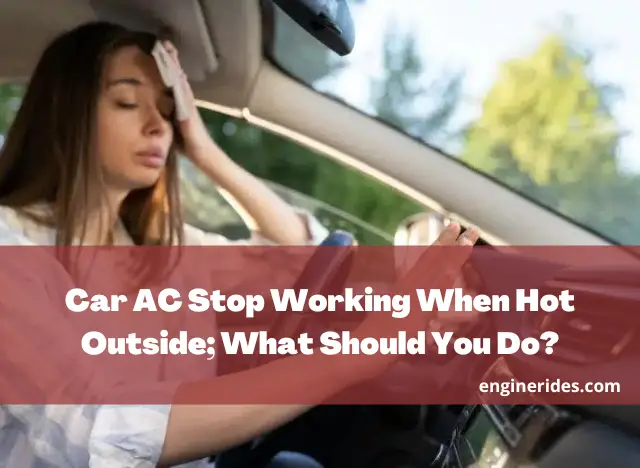Is Your Car Stalls After Getting Gas? Causes and Fixing Explained
If your car stalls after you fill up with gas, it can be annoying. This guide breaks down why it happens and how to fix it. We’ll talk about things like problems with the gas system and why the quality of fuel matters. Understanding these issues will help you get your car running smoothly again after you fill up the tank.
Why does the car stalls after refueling?
01. Evaporative Emissions System Malfunction:
Stalling after refueling can occur if components of the evaporative emissions system, such as the charcoal canister or purge valve, fail to manage fuel vapors properly. This failure can lead to an imbalance in the air-fuel mixture, causing the engine to stall.
02. Overfilling the Gas Tank:
Overfilling the gas tank can flood the evaporative emissions system with liquid fuel, saturating components like the charcoal canister. This disrupts the normal air-fuel ratio, leading to combustion issues and stalling immediately after refueling.
03. Fuel Pump or Pressure Regulator Issues:
Problems with the fuel pump, such as low pressure or a malfunctioning pressure regulator, can impact the consistent delivery of fuel to the engine. This disruption in fuel flow, especially after refueling, can result in engine stalling.
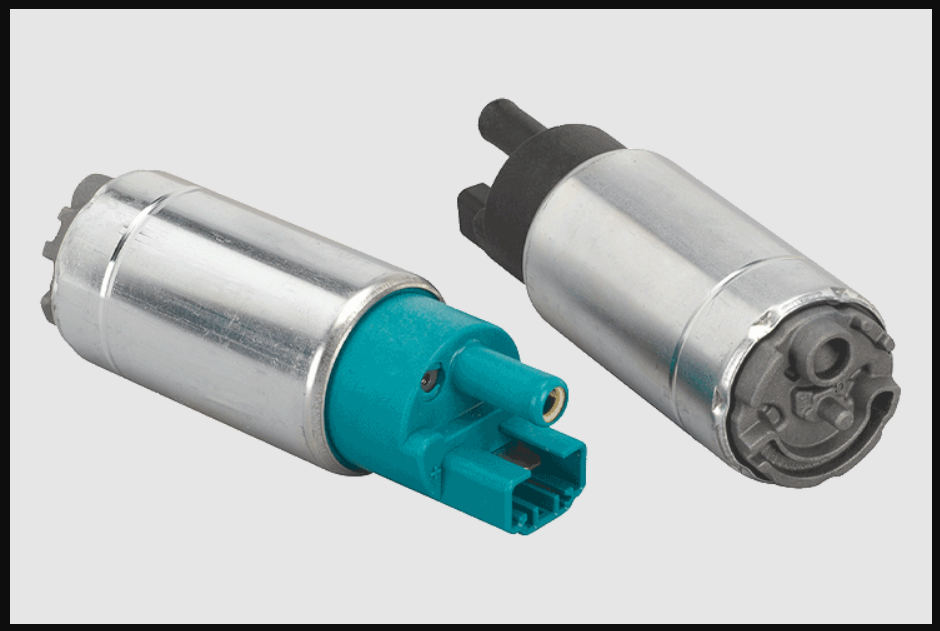
04. Idle Control Valve Dysfunction:
The idle control valve regulates the engine’s idle speed. If it malfunctions, particularly after refueling, it can lead to irregular idling or stalling as the engine struggles to maintain a stable idle, affecting immediate post-refueling operation.
05. Contaminated Fuel or Poor Fuel Quality:
Low-quality or contaminated fuel can introduce impurities that clog fuel injectors or filters. This compromises the fuel delivery to the engine, leading to combustion issues and stalling. This problem is often noticeable immediately after refueling with substandard fuel.
What are the common symptoms experienced during stalling after Refueling?
Stalling after refueling can manifest through several distinct symptoms, offering clues to the underlying issues affecting the vehicle.
- Engine Hesitation or Rough Idling
- Following refueling, the engine may exhibit hesitation or irregular idling. This manifests as a noticeable struggle to maintain a smooth and consistent RPM, indicating potential disruptions in the air-fuel mixture.
- Sudden Stalls or Engine Shutdown
- One of the most apparent symptoms is the abrupt stalling or complete shutdown of the engine immediately after refueling. This can be a result of disrupted fuel delivery or combustion issues arising from malfunctions in the fuel system.
- Check Engine Light Illumination:
- Stalling often triggers the vehicle’s onboard diagnostics system, prompting the illumination of the check engine light on the dashboard. This light signifies that the engine control unit has detected irregularities, and retrieving error codes can provide insights into the specific problem.
- Difficulty Restarting the Engine:
- After stalling, restarting the engine may become challenging. This difficulty is indicative of persistent issues affecting the fuel system or engine components, preventing a smooth restart.
- Unusual Noises or Vibrations:
- Stalling may be accompanied by unusual noises, such as sputtering or vibrations, signaling an imbalance in the combustion process. These audible and tactile cues can further point to fuel system irregularities.
Recognizing these symptoms is crucial for timely diagnosis and intervention. If a vehicle consistently stalls after refueling, it is advisable to seek professional inspection to address potential issues within the fuel system and ensure the continued reliability and safety of the vehicle.
How to fix stalling after getting gas?
Inspection 01: Check for Error Codes
- Tool Requirement: OBD-II scanner.
- Procedure: Connect the OBD-II scanner to the vehicle’s diagnostic port.
- Action: Retrieve error codes and note any issues related to the fuel system, emissions, or engine performance.
Inspection 02: Inspect the Gas Cap
- Visual Check: Examine the gas cap for any visible damage or wear.
- Tightness Check: Ensure the gas cap is tightly sealed after refueling.
- Action: Replace the gas cap if it’s loose, damaged, or shows signs of wear.
Inspection 03: Avoid Overfilling
- Guideline Check: Adhere to the recommended fuel level to prevent overfilling.
- Prevention: Avoid topping off the tank excessively, as this can flood the evaporative emissions system.
Gas Tank Filler Neck Problems, Symptoms And Fixes Explained
enginerides.com
Inspection 04: Check for Fuel Leaks
- Visual Inspection: Examine the fuel filler neck, lines, and connections for visible leaks.
- Action: Address any identified leaks promptly. Tighten connections or replace damaged components.
Inspection 05: Inspect Evaporative Emissions System
- Visual Inspection: Check components like the charcoal canister and purge valve for physical damage.
- Functionality Check: Ensure proper functionality of the evaporative emissions system components.
- Action: Replace or repair damaged or malfunctioning parts.
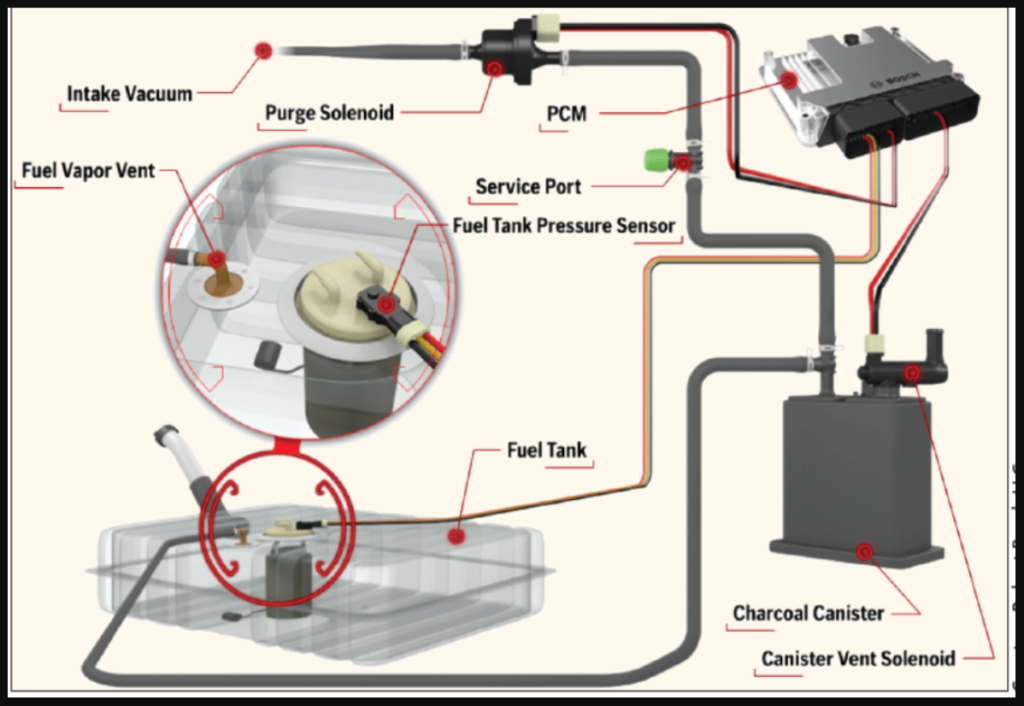
Inspection 06: Examine the Idle Control Valve
- Locate the Valve: Identify the idle control valve in the engine bay.
- Visual Inspection: Check for any signs of clogging or damage.
- Functionality Check: Verify that the valve is operating correctly.
- Action: Clean or replace the idle control valve if needed.
Inspection 07: Evaluate Fuel Pump and Pressure Regulator
- Pressure Test: Conduct a fuel pressure test using a pressure gauge.
- Regulator Check: Inspect the fuel pressure regulator for proper function.
- Action: Replace a failing fuel pump or regulator if pressure is low or if malfunctions are detected.
Inspection 08: Address Contaminated Fuel
- Fuel Additive Use: Introduce a fuel system cleaner to address potential impurities.
- Action: Follow the instructions on the cleaner product for optimal results.
Inspection 09: Drive the Vehicle
- Test Drive: Take the vehicle for a short drive, paying attention to any signs of stalling or hesitation.
- Observation: Note any improvements or persisting issues during the drive.
Inspection 10: Seek Professional Inspection
- Consult a Mechanic: If DIY efforts do not resolve the problem, consult a qualified mechanic.
- Professional Tools: Mechanics use specialized tools and expertise for a comprehensive inspection.
- Action: Follow the recommendations of the mechanic for further diagnosis and resolution.
Remember to exercise caution and prioritize safety during each inspection step, especially when dealing with the fuel system components. If uncertain, seeking professional assistance is advisable.
How Much Coolant Loss Is Normal? Best Guide
enginerides.com
Why does the car starts then dies after getting gas?
A car starting and then immediately dying after getting gas may be indicative of issues with the evaporative emissions system or the fuel system. Overfilling the gas tank can flood the charcoal canister, disrupting the air-fuel mixture and causing stalling.
Faulty components like the purge valve or fuel pressure regulator may lead to inadequate fuel delivery. Contaminated fuel, a malfunctioning idle control valve, or a loose gas cap can also contribute. This scenario highlights the importance of inspecting the evaporative emissions system, fuel components, and ensuring proper fueling practices to address and resolve the stalling issue.
Why does the car shuts off when gas cap is removed?
When a car shuts off upon removing the gas cap, it points to a disruption in the vehicle’s evaporative emissions control system.
The gas cap is a crucial component in maintaining a sealed environment, preventing fuel vapor leaks. If the cap is removed, it can create a vacuum leak, disturbing the air-fuel mixture and causing the engine to shut down.
Additionally, issues within the evaporative emissions system, such as malfunctioning components like the charcoal canister or purge valve, can lead to an imbalance in pressure, triggering an automatic engine shutdown as a safety measure.
Another possible cause is a fault in the venting system of the gas cap. If the venting is compromised or blocked, removing the cap can disturb the pressure balance, resulting in engine shutdown. Moreover, a malfunctioning fuel tank pressure sensor or a programmed response in the Engine Control Module (ECM) to shut off the engine upon detecting sudden pressure changes may contribute to this issue.
To address this problem, drivers should carefully inspect the gas cap for damage, ensure proper venting, and examine the entire evaporative emissions system. If the issue persists, consulting with a qualified mechanic for a comprehensive diagnostic is crucial to pinpoint and resolve the specific problem affecting the evaporative emissions control system and causing the engine shutdown.
